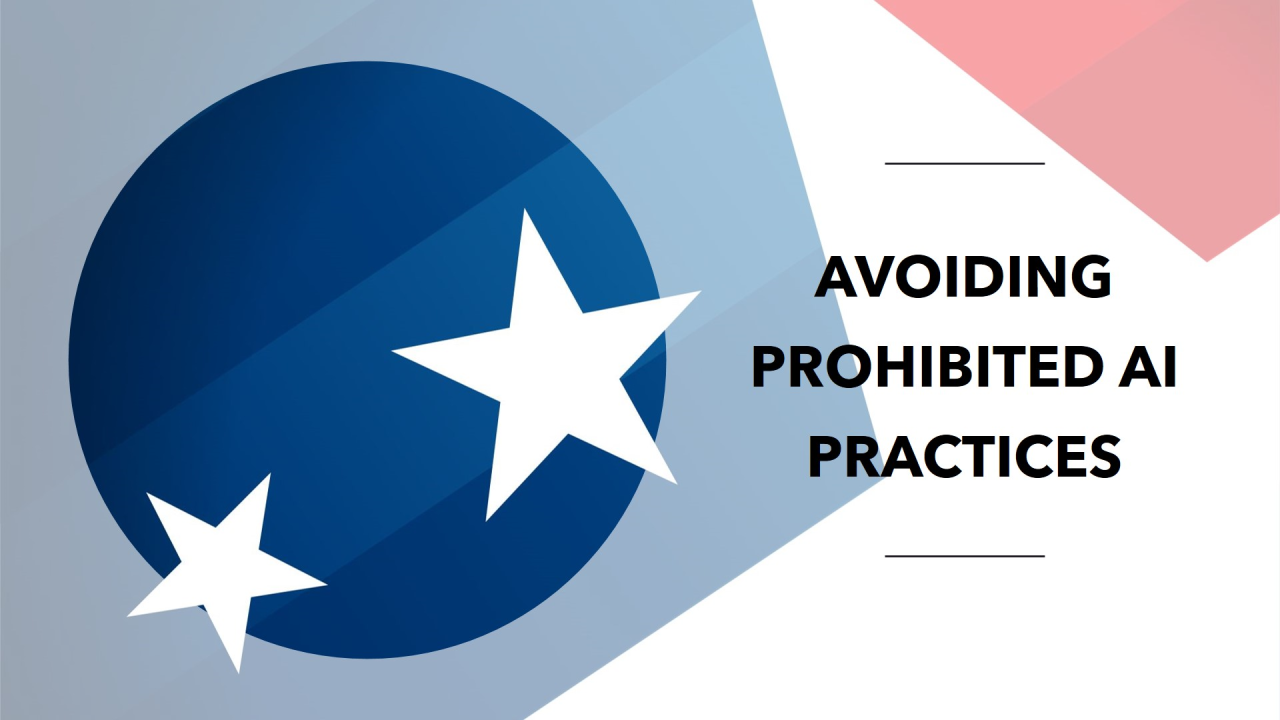Prohibited AI practices are specific uses of artificial intelligence that are explicitly banned under the EU AI Act due to their potential to cause unacceptable risks to safety, human dignity, and fundamental rights. These include systems that manipulate behavior, exploit vulnerable groups, or enable real-time biometric surveillance in public spaces. Their prohibition reflects the EU’s commitment to ethical boundaries in AI innovation.

1. Background and Establishment
The EU Artificial Intelligence Act introduces a tiered regulatory framework, categorizing AI systems by their level of risk. At the highest level are those that pose unacceptable risk—and are thus strictly prohibited.
This category reflects the EU’s stance that some AI applications are inherently incompatible with democratic values, human dignity, and legal certainty. Rather than regulate them, the law bans them outright to prevent exploitation, harm, or irreversible societal consequences.
2. Purpose and Role in the EU AI Ecosystem
The prohibition of certain AI practices serves to:
- Protect fundamental rights, including privacy, autonomy, and equality
- Prevent systemic abuses of AI in surveillance, coercion, or deception
- Establish clear ethical boundaries in technological development
- Ensure the AI ecosystem evolves within legitimate social and legal norms
- Avoid a “race to the bottom” in commercial AI deployments
By codifying bans, the Act asserts that not everything technologically possible is legally or ethically acceptable.
3. Categories of Prohibited AI Practices
According to Article 5 of the EU AI Act, the following are prohibited:
- Subliminal or manipulative systems
AI systems that distort human behavior in ways likely to cause physical or psychological harm—especially those exploiting cognitive or emotional vulnerabilities. - Exploitation of vulnerable groups
AI systems that exploit the vulnerabilities of individuals due to age, disability, or social condition, leading to harm. - Social scoring by public authorities
Systems that rank or evaluate individuals over time based on their social behavior or predicted characteristics, leading to unjustified or disproportionate treatment. - Real-time remote biometric identification in public spaces (for law enforcement)
Unless specifically allowed under narrow exceptions (e.g., serious threats or criminal investigations), such surveillance systems are banned to preserve anonymity and civil liberties. - Untargeted scraping of facial images from the internet or CCTV to build biometric databases—prohibited under privacy and fundamental rights standards.
These systems are not subject to risk mitigation or conformity assessment—they are categorically forbidden.
4. Connection to the EU AI Act and the EU AI Safety Alliance
The legal basis for these prohibitions includes:
- Article 5(1) – The definitive list of prohibited practices
- Recitals 15–18 – Provide ethical and legal justifications for the bans
- EU Charter of Fundamental Rights – Forms the normative foundation of the AI Act
The EU AI Safety Alliance supports compliance by:
- Helping organizations identify prohibited use cases early in development
- Offering screening and risk mapping tools
- Providing legal interpretation of Article 5 and adjacent GDPR requirements
- Advising on alternative design strategies for compliant innovation
With the Alliance’s tools, developers can stay clear of red-flag practices while still innovating responsibly.
5. Penalties for Violation
Breach of Article 5 provisions leads to the most severe penalties under the EU AI Act:
- Fines up to €35 million or 7% of global annual turnover, whichever is higher
- Mandatory withdrawal from the EU market
- Potential civil liability and reputational loss
There is no remediation or correction path for these violations—they must be prevented before deployment.
6. Practical Considerations for Developers and Users
To avoid prohibited practices:
- Conduct a system classification analysis at the outset of development
- Include ethical review checkpoints in product design cycles
- Monitor third-party tools or models integrated into your system
- Avoid repurposing general-purpose AI in a way that violates Article 5
- Consult with the EU AI Safety Alliance if use cases fall in legal grey zones
Prohibited systems often begin as technological experiments but cross into ethical violations when deployed at scale.
7. How to Ensure Your AI System Stays Within Legal Boundaries
- Map your AI use case against Annex III (high-risk) and Article 5 (prohibited)
- If uncertainty arises, consult legal counsel or the EU AI Safety Alliance
- Establish AI ethics boards or review panels for risk-sensitive applications
- Keep thorough documentation justifying system purpose and boundaries
- Avoid using AI in contexts that undermine autonomy, consent, or rights
- Incorporate real-time audits and user feedback mechanisms to detect drift toward prohibited functionality
The goal is not only to comply with the law—but to align with the spirit of trustworthy and lawful AI.

